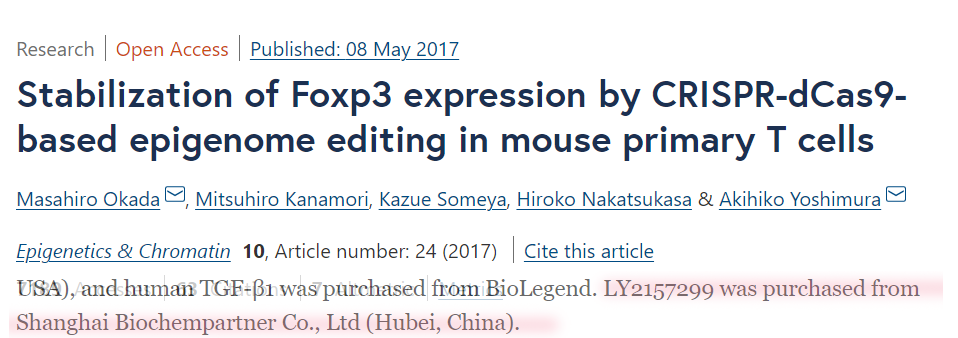Stabilization of Foxp3 expression by CRISPR-dCas9-based epigenome editing in mouse primary T cells

Abstract Background Epigenome editing is expected to manipulate transcription and cell fates and to elucidate the gene expression mechanisms in various cell types. For functional epigenome editing, assessing the chromatin context-dependent activity of artificial epigenetic modifier is required. Results In this study, we applied clustered regularly interspaced short palindromic repeats (CRISPR)-dCas9-based epigenome editing to mouse primary T cells, focusing on the Forkhead box P3 (Foxp3) gene locus, a master transcription factor of regulatory T cells (Tregs). The Foxp3 gene locus is regulated by combinatorial epigenetic modifications, which determine the Foxp3 expression. Foxp3 expression is unstable in transforming growth factor beta (TGF-β)-induced Tregs (iTregs), while stable in thymus-derived Tregs (tTregs). To stabilize Foxp3 expression in iTregs, we introduced dCas9-TET1CD (dCas9 fused to the catalytic domain (CD) of ten-eleven translocation dioxygenase 1 (TET1), methylcytosine dioxygenase) and dCas9-p300CD (dCas9 fused to the CD of p300, histone acetyltransferase) with guide RNAs (gRNAs) targeted to the Foxp3 gene locus. Although dCas9-TET1CD induced partial demethylation in enhancer region called conserved non-coding DNA sequences 2 (CNS2), robust Foxp3 stabilization was not observed. In contrast, dCas9-p300CD targeted to the promoter locus partly maintained Foxp3 transcription in cultured and primary T cells even under inflammatory conditions in vitro. Furthermore, dCas9-p300CD promoted expression of Treg signature genes and enhanced suppression activity in vitro. Conclusions Our results showed that artificial epigenome editing modified the epigenetic status and gene expression of the targeted loci, and engineered cellular functions in conjunction with endogenous epigenetic modification, suggesting effective usage of these technologies, which help elucidate the relationship between chromatin states and gene expression.




